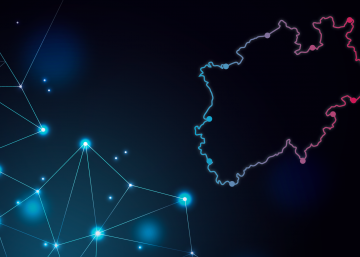Beacons (engl. Leuchtfeuer) sind kleine Sender, die auf der Bluetooth-Technologie Informationen im Nahbereich senden.
Im touristischen Umfeld kommen sie zum Einsatz um Informationen an bestimmten Orten zur Verfügung zu stellen, beispielsweise ein GPX-Track am Beginn eines Wanderweges oder ein Beschreibungstext bei einer Sehenswürdigkeit. Gerne werden sie auch bei virtuellen Stadtführungen eingesetzt. Die Beacons leiten hier mit Informationen von Station zu Station und ermöglichen Führungen zu jeder Tages- und Nachtzeit und unabhängig von Stadtführern.
Vor etwa drei Jahren hat Google (Android) hierfür Nearby Notifications entwickelt und in alle Android-Smartphones implementiert. Damit benötigte man keine separate App mehr um die Information eines Beacons zu empfangen. Lediglich Bluetooth musste aktiviert sein um automatisch in der Nähe eines Beacons die gespeicherte Information zu bekommen. Damit war die Hürde eine extra App zum Empfang der Information zu besitzen zumindest für Nutzer von Android-Smartphones abgeschafft.
In Zukunft keine Nearby Notifications mehr
Vergangenen Sonntag veröffentlichte Android über seinen Developers Blog die Meldung, dass sie in Zukunft Nearby Notifications nicht mehr unterstützen werden. Und damit die abgeschaffte Hürde zum Empfang von Beacon-Informationen wieder aufbauen.
Discontinuing support for Android Nearby Notifications
25 October 2018
Posted by Ritesh Nayak M, Product Manager (Quelle: https://android-developers.googleblog.com/2018/10/discontinuing-support-for-android.html)
Three years ago, we created Nearby Notifications as a way for Android users to discover apps and content based on what is nearby. Our goal was to bring relevant and engaging content to users – to provide useful information proactively. Developers have leveraged this technology to let users know about free wifi nearby, provide guides while in a museum, and list transit schedules at bus stops.
We’ve learned a lot building and launching Nearby Notifications. However, earlier this year, we noticed a significant increase in locally irrelevant and spammy notifications that were leading to a poor user experience. While filtering and tuning can help, in the end, we have a very high bar for the quality of content that we deliver to users, especially content that is delivered through notifications. Ultimately, we have determined these notifications did not meet that bar. As a result, we have decided to discontinue support for Nearby Notifications. We will stop serving Nearby Notifications on December 6th, 2018.
What does it mean for Android users
Android users will stop receiving Nearby Notifications.
What does it mean for developers
On December 6th we will stop delivering both Eddystone and Physical Web beacon notifications. You will still continue to have access to the beacon dashboard and can deliver proximity based experiences similar to Nearby Notifications via your own apps using our Proximity Beacons API.
We have two related APIs, Nearby Messages and Connections, that are available for developers to build device-to-device connectivity experiences, and also have Fast Pair, for device discovery and pairing. We will continue to invest in these APIs and support products using these technologies.
We sincerely appreciate the efforts of the Android developer community in supporting and evolving Nearby technology and the feedback that has helped us improve. We look forward to continuing to deliver engaging proximity experiences to users and seeing what developers create within their apps with our APIs.




30. November 2018, 12:51
Seht ihr die Beacons als komplett gescheitert? Bleibt nicht ein Beacon interessant, wenn es um ein „geschlossenes“ Storytelling-Projekt geht? Also in Bereichen, in dem eine App durchaus eine Berechtigung hat? Dann könnte es eine spannende Verlängerung von digitalen Infos sein? Zum Beispiel in Museen, auf Lehrpfaden oder anderen didaktischen Bildungsorten.
30. November 2018, 13:42
Hallo Stefan.
Ich würde auch nicht sagen, dass Beacons komplett gescheitert sind. Auch ohne die Nearby-Funktion ist die Funktionalität eines Beacons ja noch vollumfänglich gegeben. Allerdings eben wieder mit größeren Hürden verbunden, eben einer separaten App, die den Empfang der Beacon-Informationen ermöglicht.
Im Bereich eines geschlossenen Storytelling-Projektes in dem es zu Beginn einen expliziten Hinweise auf eine App gibt, die genau diese Informationen verfügbar macht, machen Beacons nach wie vor Sinn und hierfür würde ich sie auch nach wie vor empfehlen.
Spannend waren die Beacons halt im Umfeld der unbewussten Informationsempfängnis. Das ist ab jetzt leider nicht mehr möglich.
Grüße, Sebastian
11. Januar 2019, 15:11
Hallo Sebastian,
siehst Du denn irgendwelche Alternativen zu den Beacons – in der Nutzung ohne App? Wir hatten eigentlich den Einsatz für dieses Jahr geplant und fragen uns jetzt, was wir stattdessen machen können.
Viele Grüße, Carolin
11. Januar 2019, 16:45
Hallo Carolin.
Also generell im Bereich der Sender wäre wohl NFC (Near Field Communication) ein Thema, allerdings macht das für eure Anwendung wenig Sinn, da NFC einen recht nahen Kontakt mit dem Sender benötigt.
In eurem Falle würde ich euch eine PWA (Progressive Web App) in Verbindung mit GPS/Geofencing empfehlenden, die den Einstieg über eine WLAN-Landingpage schafft. Gerne können wir uns dazu mal austauschen.
Beste Grüße, Sebastian